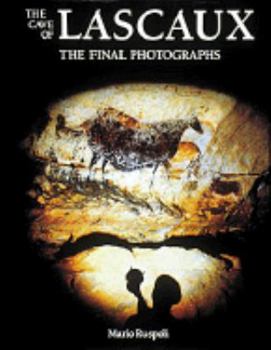Cave of Lascaux
Select Format
Select Condition 
Book Overview
208 pages. Includes text, photographs, drawings, maps, etc.. 12 7/8" X 10" X 1" clothbound. This description may be from another edition of this product.
Format:Hardcover
Language:English
ISBN:0810912678
ISBN13:9780810912670
Release Date:May 1987
Publisher:Harry N. Abrams
Length:208 Pages
Weight:3.75 lbs.
Dimensions:0.8" x 10.3" x 13.0"
Customer Reviews
3 ratings
A bit dated, but still valuable....
Published by Thriftbooks.com User , 21 years ago
In LASCAUX: THE FINAL PHOTOGRAPHS, Maria Ruspoli, historian and television producer, says "underground Paleolithic sanctuaries were places not for living in but for initiation." Ruspoli produced a film about Lascaux, and his posthumous book includes a relatively recent version of the history of the period within which the famous caves were decorated, as well as still shots of the cave interior and his film crew at work. The book indicates the interior of Lascaux will never again be subjected to filming. As it was, it took several years to complete the film owing to the fragile nature of the caveRuspoli suggests Lascaux served as some sort of gathering place for Cro-Magnon humans for religious or magical activity. He says early Europeans would have found the cave an inhospitable dwelling place. He suggests the hunters who decorated the cave walls probably lived outside them in huts made from animal skins-just as reindeer hunters near the arctic circle do today. He notes the preserved impressions of adolescent feet found in the prehistoric floors at Niaux and suggests they may have been from the feet of children participating in some sort of coming-of-age ceremony. On the other hand, he says, they may merely reflect the fact that children never lose an opportunity to press their feet in mud. (For a more in-depth discussion of the possible ritual use see Paul Bahn's JOURNEY THROUGH THE ICE AGE). Most of Ruspoli's book consists of text he apparently wrote, but included is an essay by Brigitte and Gilles Delluc entitled, "The Eye of the Hunter and the Genius of the Artist." Photographs by the Dellucs show limestone rocks the artist used as lamps and and oyster shell pigment containers. The Dellucs discuss the various paintings at Lascaux, including a mysterious unicorn. Apparently, Ruspoli drew on material known to him prior to his death. The discovery of Chauvet was not included in this material. I don't think this omission detracts from the book, because understanding how historians and archeologists viewed and understood the people of the upper Paleolithic prior to the discovery of Chauvet can only help the reader appreciate the incredible discovery of Chauvet. Sadly, the pristine condition of the Chauvet Cave only underscores the damage from human intrusion at Lascaux.
Stunning Photos, Useful Text
Published by Thriftbooks.com User , 22 years ago
If there are omissions or flaws in the pictures, I wouldn't know as I am not an archeologist, artist, or photographer. Just taking the book as it comes then, the pictures are a knockout. The text is not clear on describing the layout of the cave and the locations of the pictures. There are few photos that are not closeups of the paintings, so you can't get a sense of place. The diagrams of the caves are poorly labeled. There is lots of irrelevant detail about the animals rather than the paintings of them. Some good detail on the archeology of the pigments. The authors' interpetations are generally cautious but anachronistically suggest a religious purpose for the paintings...
A dazzling photographic record of Lascaux cave paintings
Published by Thriftbooks.com User , 23 years ago
Thousands of visitors viewing the prehistoric paintings in the cave of Lascaux damaged them with moisture from their breath. Fungi began to grow on the paintings, threatening their destruction. So French authorities decided to seal the cave of Lascaux forever. First, they allowed a final color photography expedition into the cave. This beautiful book displays 100 plates of the resulting color photographs. Also, it has more than 50 other illustrations. These include drawings of paintings and other symbols found in the cave, archeological plans and a map of other prehistoric cave sanctuaries found elsewhere in Spain and France. And, of course, there is an abundance of explanatory text. This book is a visual delight.





